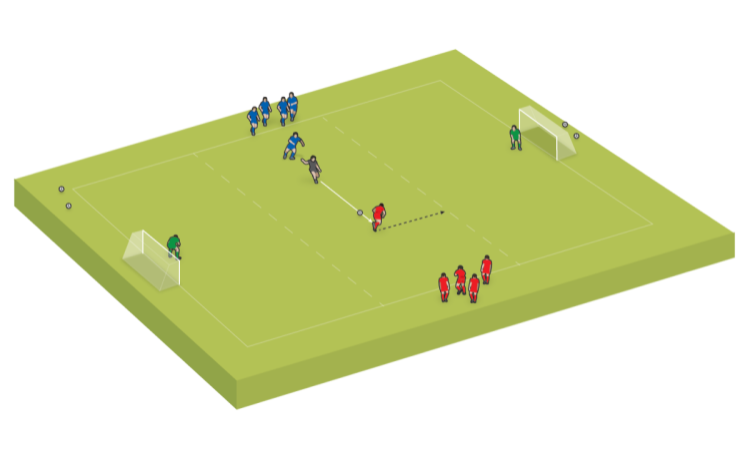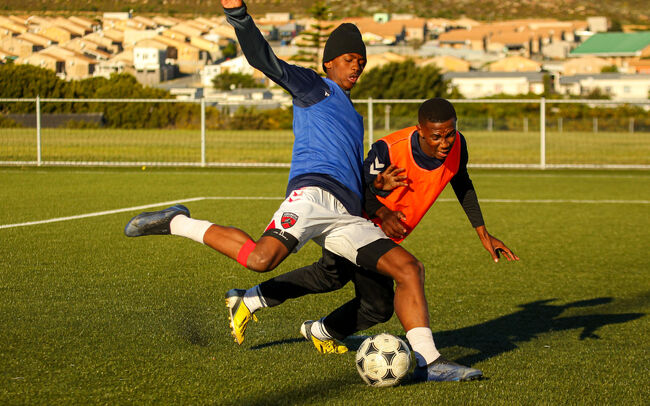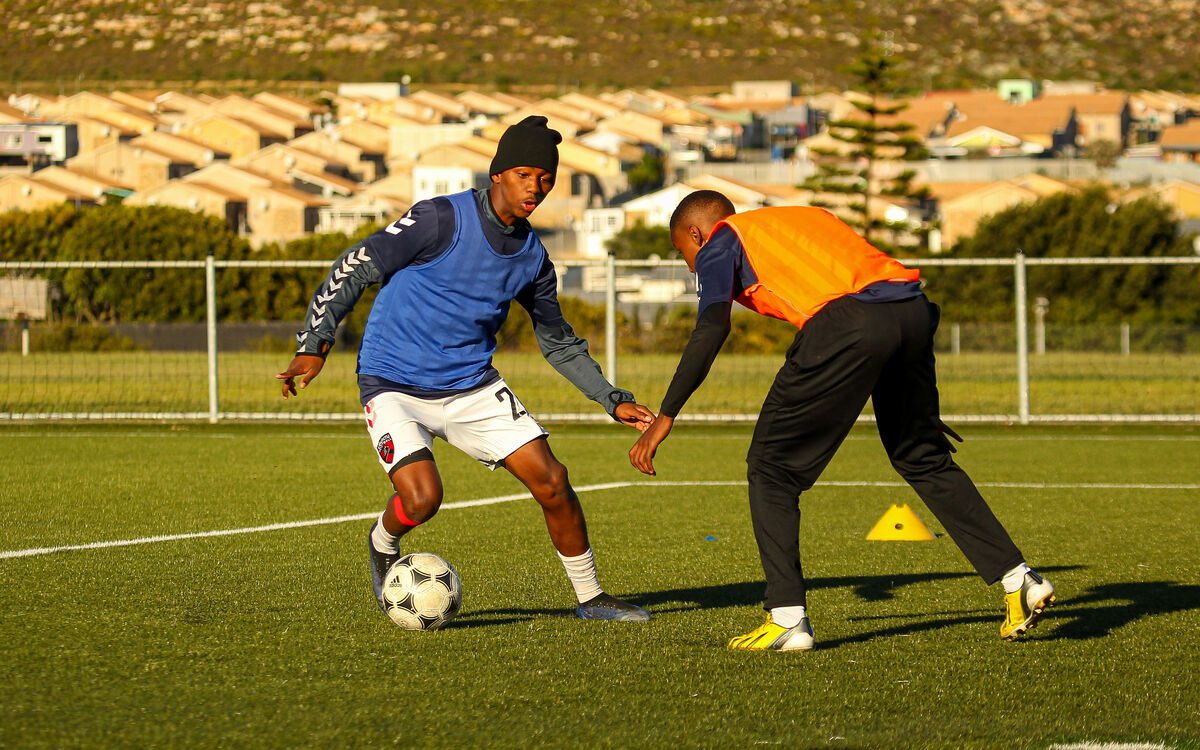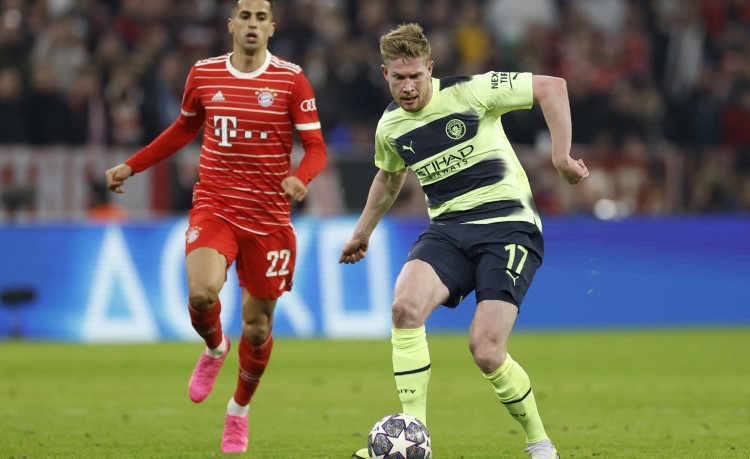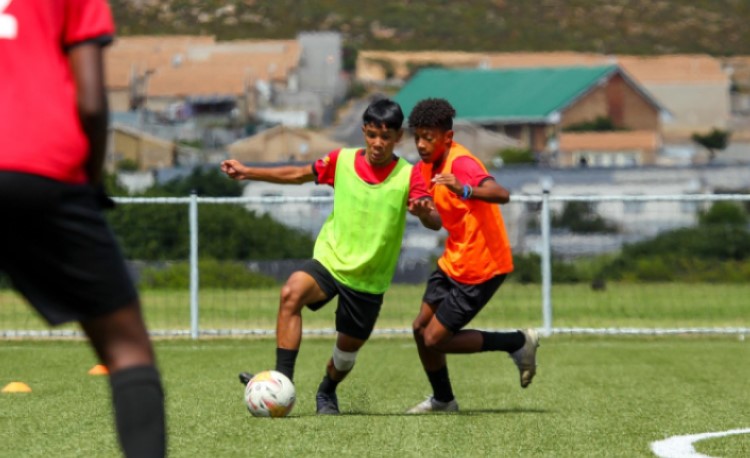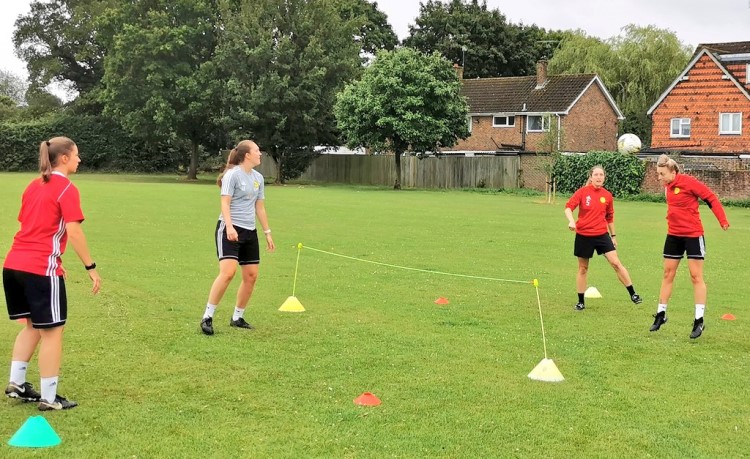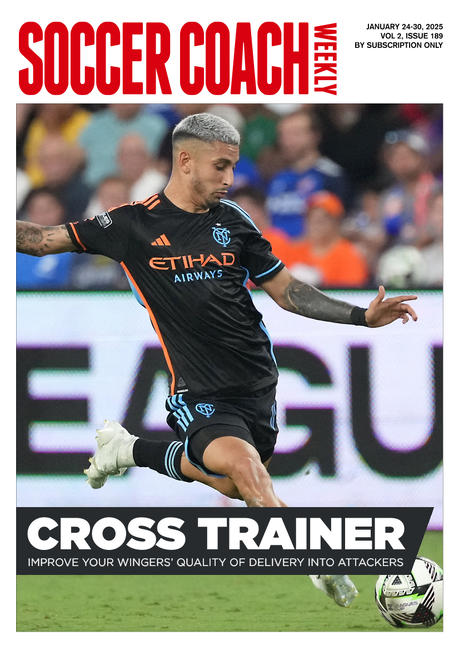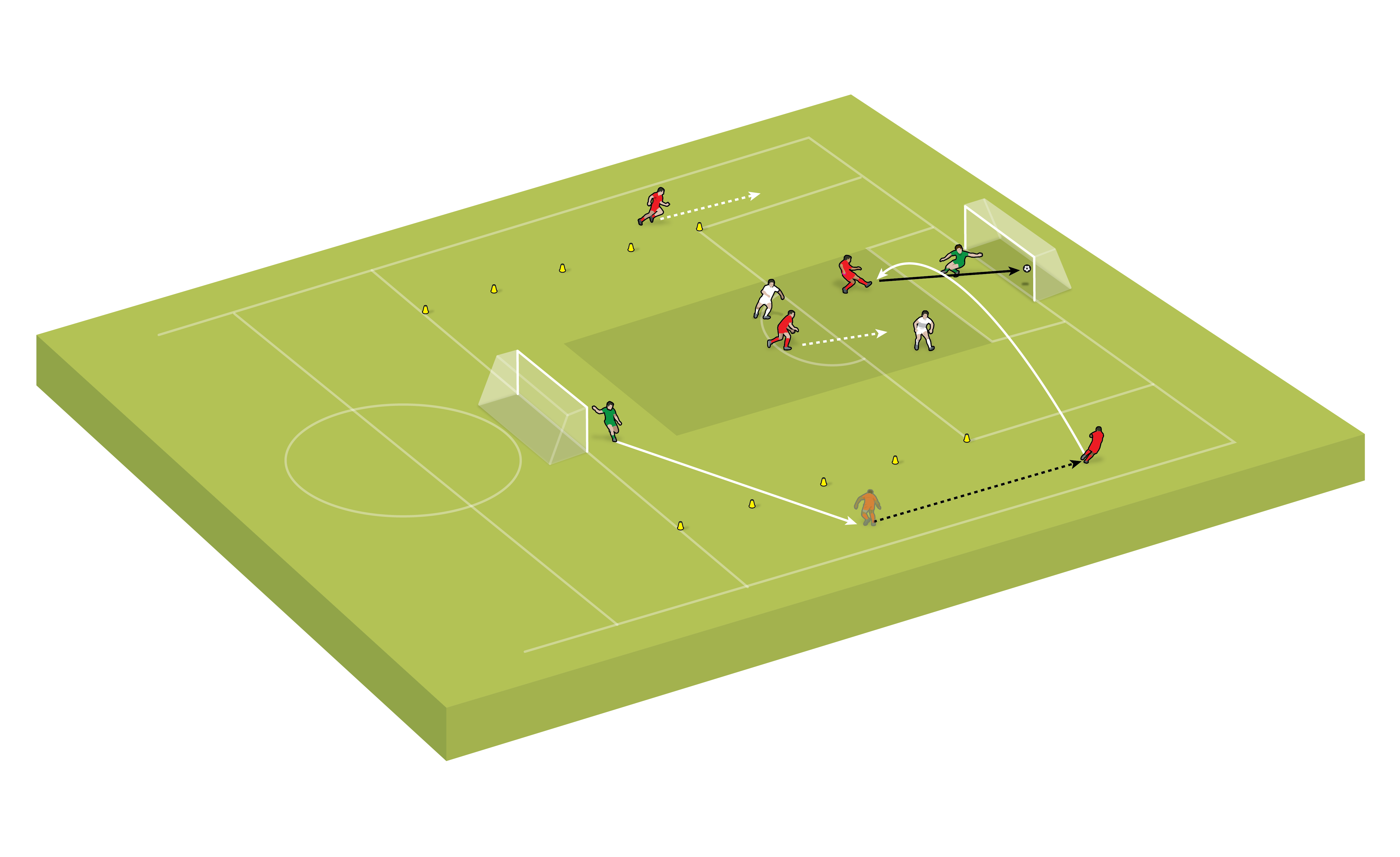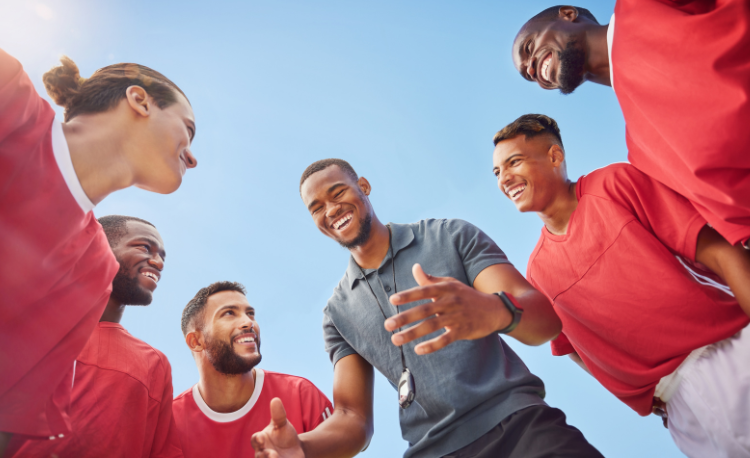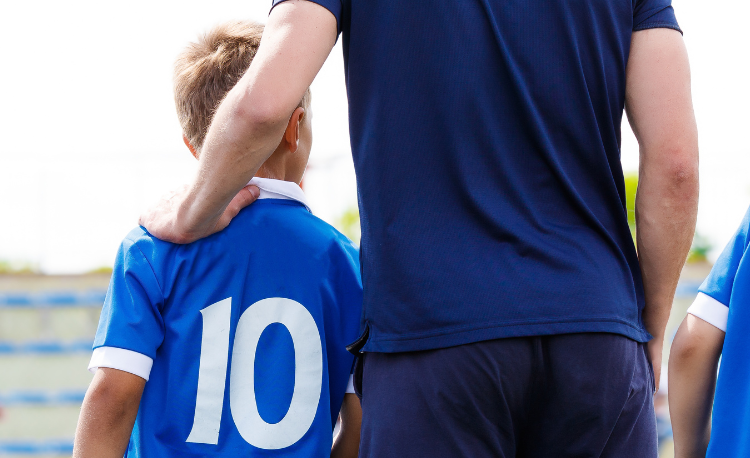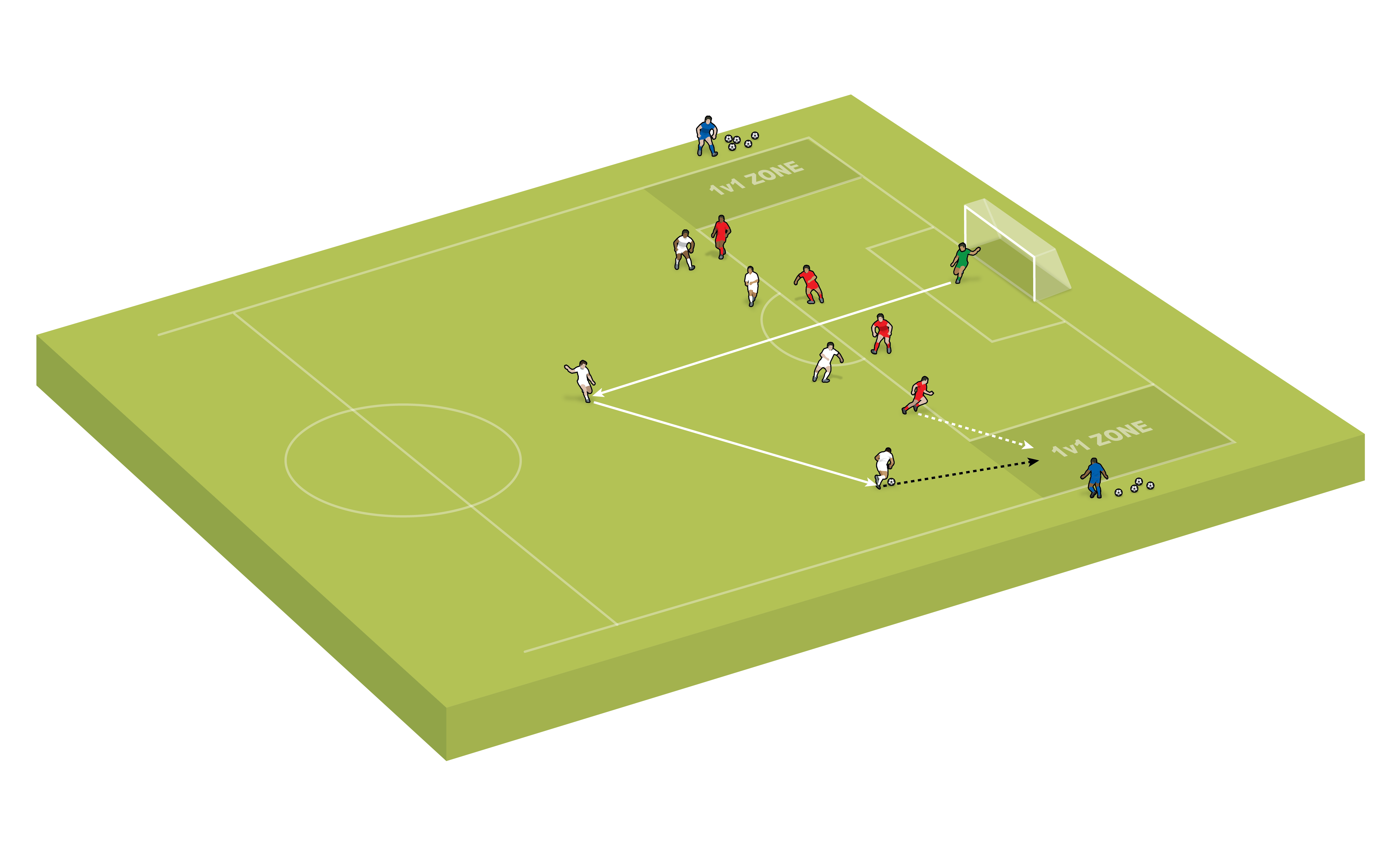Developing soccer skills: receiving
Getting the ball under control is fundamental to the success of attacks. Moritz Kossmann tells Steph Fairbairn how coaches can develop this crucial skill.
Receiving is such a vital skill in soccer.
A good first touch can beat a player in an instant, get a team out of trouble or create a chance on goal.
But how can we support players to improve their receiving?
Moritz Kossmann is a coach at Ubuntu Football Academy in Cape Town. There, he coaches the U21s, who play in the third tier of South African football, and oversees the senior section, made up of U18s and U16s.
Moritz lent SCW his expertise on receiving – what it is, what good receiving looks like and how we can coach it…
SCW: Can you give us a definition of receiving?
MK: Receiving is something you do when someone passes you the ball in the game.
That would be the most frequent action – getting the ball under control after a team-mate has passed you the ball.
A less frequent moment would be if you are intercepting a pass from an opponent. I would also define this as a reception of the ball.
SCW: When receiving from a team-mate, what are some of the key things we are looking for from a player?
MK: On the most fundamental level, you want to get it [the ball] under your control so you are next able to make a dribbling, passing or perhaps even a shooting action.
In the modern game, with a lot more high and collective pressing schemes being employed, the game has moved to a stage where you need to control and develop the play with one touch.
Perhaps on a lower level, or in the older times, you were able to stop the ball, control it and then move the ball with the second touch. Nowadays, the first touch needs to take you into your new playing direction.
Controlling and moving the ball should happen ideally with one touch so that you are able to play through the pressing that is happening at a high intensity.
SCW: Thinking about that, what kind of things are we looking for? Scanning? Body position? What are your coaching points around good receiving?
MK: Receiving starts before you have got the ball under your control. That’s scanning. But scanning for what?
"I think the most important thing is that we teach our players what to scan for..."
As coaches, we love talking about scanning as a coaching point. But if I look to my left, if I don’t know what to look for, I could be looking at anything.
I think the most important thing is that we teach our players what to scan for - where the open space is to take my first touch into, and the position of opponents and what direction they are closing me down from, so that perhaps I can take the touch in the opposite direction, or past them.
Where are my team-mates? Am I taking a first touch towards an area where I have passing options? Or am I taking it into an area where perhaps I become more isolated?
Where am I on the field? Am I on the flank already or am I in a more central space? For me, giving meaning to scanning is a really important consideration.
Then [comes] the body position. Turning is a crucial action in football and we can’t discourage our players from it, because if we are able to be comfortable, technically, at turning with our first touch, it’s a huge weapon and makes us very unpredictable.
Nevertheless, if I’m already in a body position, facing towards, perhaps, the larger part of the field, or in the direction that I want to go, it’s helpful.
Number one, I am signalling to my team-mate where I want to receive the ball. Then, it can also accelerate and secure my actions, because if I don’t always have to turn 180 degrees into a new direction, it is certainly easier to execute a reception and move the ball along, even against a higher press.
SCW: What are the parts of the body we can use to receive, including different parts of the foot?
MK: Receiving with the instep, which is the largest part of your foot, is perhaps the most simple way to control the ball. It might also be the more predictable one.
Whereas, if I am receiving with the outside of my foot, it can be less predictable. It can add a new spin and momentum to the ball.
Technically, players need to be comfortable at receiving a higher ball too, whether that is with the knee, chest or even the head. It’s an important skill to have, especially for central defenders and forwards who have to be proficient at playing with the ball in the air, but also on the ground.
Sometimes players can surprise us and receive with a totally different part of the body that you haven’t even thought of as a coach, but that can add creativity to the game, or might be appropriate situationally.
SCW: Where do you think the line is between teaching players what we think is ideal technique, and going with what works for them and is more natural to their bodies?
MK: I think that’s a tricky balance to get correct, because as coaches we have this ideal technical picture in our mind.
Nevertheless, due to the qualities and characteristics each player brings, what their body allows them to do or what might be the most efficient way might be greatly different from that ‘ideal technique’.
One example is someone like Thomas Muller, who has had a 15-year career at the highest level. He isn’t someone that looks very pleasing on the eye from the ideal technique point of view. Nevertheless, it works, it’s functional and it’s efficient.
It’s also unpredictable, because if you are coming with unique solutions to football problems, chances are that opponents aren’t used to those unique solutions. Whereas if you have a very clean and, perhaps, predictable technique, it is easier to read in terms of body cues.
What I would say is, when we are teaching our players, we have got to observe whether they are having success with their actions or not - whether it is something that works for them and is successful in the majority of situations.
If there is a struggle and it doesn’t work, then perhaps we need to assist the players in optimizing and adjusting the actions.
But even with that, we need to figure out whether it’s about execution, a technical problem, decision making, an interaction problem or a communication problem.
My go-to method is not to be too fast at correcting something that looks unorthodox. We need to also go into training sessions with the mindset of trying to learn from our players.
"If there is a struggle, we need to assist the players in optimizing and adjusting actions..."
Sometimes players can open our eyes to solutions we haven’t thought about previously, but that might be very functional.
SCW: How do we best coach receiving, in terms of both technique and decision-making? What are your thoughts on unopposed and opposed practices?
MK: I’m fortunate that I work with some of the best young players, in this region at least, and I’m a big believer in opposed practice.
I enjoy the opposed practices because of the interactive element they bring in terms of communication and decision-making.
I’m not fundamentally against unopposed practices whatsoever. In fact, I think, as a warmup, they can be very useful. Obviously, at a lower beginner level and a younger level, they certainly have their place.
But I think it’s important, whatever level you’re working at, to start with the game and work from there; to observe whether players are coping in the football situation. If they are not coping, then we can simplify the football situation.
If the simplification still doesn’t do it, if there’s still a disproportionate struggle, then I can obviously always go to the unopposed scenario.
Maybe that can be as a pre warm-up, as an individual warm-up to a session, as a team warm-up, or even as a homework scenario where you can encourage the player to go and practice it in their time outside of team training.
But I would always start with a game and try to simplify or adjust it to encourage learning, and then move towards unopposed practice if I’m not gaining the success that I need, rather than the other way around – starting unopposed and then gradually adding resistance.
Related Files
At the end of the day, players come to team training and to football because they want to compete with other people and with other teams.
The greatest joy that people get is from having a little bit of success in scoring goals in those scenarios.
As coaches, we should use that as the starting point and the end point. The practices, whether they are opposed or unopposed, should be tools to help facilitate growth in the scenario, which is the game.
SCW: If we were to think about a player’s journey, as they go from beginner to intermediate to more advanced, what are the building blocks for receiving that they need to know?
MK: Obviously, the younger you are, and the more of a beginner you are, the smaller – globally – the game is you play.
So it perhaps starts in a 3v3, or even a 2v2 or a 4v4, and then the amount of team-mates and opponents gradually increases as you get older.
If you are receiving in a 3v3, as opposed to an 11v11, it is a very different situation - because, in the 3v3, even for a younger player, you have an easier overview of the overall situation.
Having a good reception of the ball into open space is more impactful than in an 11v11, because you are immediately creating a very tangible, situational, numerical advantage in the small-sided game.
So even if you are just talking about playing smaller-sided games versus larger-sided games, I already see a degree of building block within that, because of the complexity of the bigger game and the relative simplicity of the smaller game.
Nevertheless, at the beginning, you want to just be able to control the ball without immediately losing it on the control.
A second step is to develop the open body position, scanning for relevant information. A step after that is to control and move the ball into space with the first touch, doing it with both feet and different parts of the body.
Moving into the ball while it is travelling, and thereby creating new angles and lines and disorientation for the opponent, is what I see as the last part of the journey.
SCW: Any final thoughts on receiving?
MK: Players across the globe are inherently competitive beings. Even if you are wanting to do relatively isolated training, it can still be done in a competitive way - ’football tennis’, ’football volleyball’, different variations thereof, at any level of the game, can be a very nice technical practice that is still, to a degree, competitive and opposed.
It can be used in the initial part of sessions, or in sessions early in the week to develop receiving skills, particularly of aerial balls.
I’ve never worked with a team that doesn’t enjoy a ’football tennis’ or ’football volleyball’ practice. That’s something that coaches can be creative with, to adapt to their particular level of player and context.
Newsletter Sign Up
Coaches Testimonials

Gerald Kearney, Downtown Las Vegas Soccer Club

Paul Butler, Florida, USA

Rick Shields, Springboro, USA

Tony Green, Pierrefonds Titans, Quebec, Canada
Subscribe Today
Discover the simple way to become a more effective, more successful soccer coach
In a recent survey 89% of subscribers said Soccer Coach Weekly makes them more confident, 91% said Soccer Coach Weekly makes them a more effective coach and 93% said Soccer Coach Weekly makes them more inspired.
*includes 3 coaching manuals
Get Weekly Inspiration
All the latest techniques and approaches
Soccer Coach Weekly offers proven and easy to use soccer drills, coaching sessions, practice plans, small-sided games, warm-ups, training tips and advice.
We've been at the cutting edge of soccer coaching since we launched in 2007, creating resources for the grassroots youth coach, following best practice from around the world and insights from the professional game.

